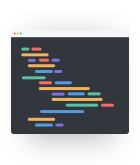Email forwarding is a quick and easy way to share an email with friends, family and co-workers
Some email marketing teams even forward emails to their team members as a part of the email review process before sending.
But, html email breaks when forwarding can be a big headache for email marketers, impacting bulletproof buttons, adding extra spaces to your email design and other issues.
In this post, we discuss why emails break when forwarded and what you can do about it.
Why does an HTML email break when forwarded?
Email clients all render email differently. When a subscriber forwards an email, some email clients make changes to the code of the forwarded message. This may include:
- Stripping out certain HTML elements
- Wrapping your email in a block quote
- Inserting additional classes to your code
Here’s an example of a button that breaks when the email is forwarded:


What to do when forwarded emails break
Bad news first? There is consensus in the email development world that very little can be done to completely avoid changes to your design when subscribers hit the forward button. Whether or not an email client alters your code simply isn’t something you can control.
That’s why some email marketers have just come to accept HTML email breaks when forwarding emails is a part of the territory. But if forwarding and sharing is key to your campaigns, try these tips to minimize the impact.
1. Keep your email design simple
While it doesn’t work for everyone, simpler email design layouts (e.g. single-column) typically hold up a little better when forwarded. If your email is less complex, there is less that could go wrong.
2. Offer alternative sharing options
Using the email client’s forward function clearly is the most natural way for readers to share an email. However, there are ways you can encourage readers to share your email without hitting the forward button.
For example, many email service providers (ESPs) provide tools that allow you to embed a “forward to a friend” link in your email which, when clicked, will send your email to the email address the subscriber provides—without messing with your code.
If your audience is social media savvy, you could also experiment with a prominent placement of social sharing options that allow your readers to share the web-version of your email via social media.
3. Use an alternative review method
Avoid confusion over emails that look broken by using alternative review methods. If you’re using our email builder, it has an entire share panel devoted to getting feedback on your campaigns. You can share your email via a public URL, or easily send a test email to your coworker’s inboxes, ensuring the whole team sees the email as it’s intended.
 | Litmus Builder—A Code Editor Built for EmailBuild and preview your email in real-time, plus utilize reusable code snippets and templates to save time and reduce errors. |
The info in this blog is 2+ years old and may not be updated. See something off? Let us know at hello@litmus.com.
Jaina Mistry is a Brand and Content Marketing Leader.
